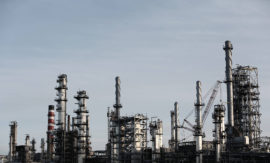Intended learning outcomes: Estimate how much money can be invested in a distillation device, if management sets a limit of 2 years maximum for payback on this kind of investment.
In the production of 300 kg per hour of an active substance for the manufacturing of photographic paper, 20 tons of sewage water accrue per day. The sewage flow is contaminated with an organic dissolver, which is needed for the production of the active substance. The purchase price of the dissolver is $1.30 per kg. The current production process has about 6000 operating hours per year and runs on the principle of continuous production. The sewage water needs to be disposed of as waste product. Because of dissolver contamination of approximately 5 % (mass percent), extra costs of $5.50 per m3 are caused in comparison to wastewater without organic impurities.
On the basis of thermodynamic calculations and laboratory tests, it was estimated that it would be possible to separate almost all of the dissolver by adding a simple distillation column as a further process step. For the distillation, 80 kg heating steam (cost: $20 per ton) is needed per m3 of sewage water. The regained dissolver can be reintroduced into the production process without any additional effort.
Problem: The plant engineer now attempts to estimate how much money can be invested in the distillation device, if management sets a limit of 2 years maximum for payback on this kind of investment. Can you help?
Solution:
- 6000 operating hours equals 250 days (continuous production!)
- 20 * 250 = 5000 tons of sewage water accrued per year
- Loss of dissolver: 250 t/a, → savings from recovery: $325,000 / a
- Savings from lower cost for wastewater treatment: $27,500 / a
- Additional cost for heating steam: $8000 / a
- Total savings: $344,500 per year
- Payback time: max. 2 years → about $689,000 available for investment
Course section 8.7: Subsections and their intended learning outcomes

8.7 Scenarios and Exercises
Intended learning outcomes: Differentiate between batch production and continuous production. Calculate an example of manufacture of by-products. Elaborate an example of production planning in process industries.

8.7.1 Scenario: Batch Production versus Continuous Production
Intended learning outcomes: Differentiate between batch production and continuous production. Explain the criteria that are important for the decision for one or the other of these concepts.

8.7.2 Exercise: Manufacture of By-Products
Intended learning outcomes: Estimate how much money can be invested in a distillation device, if management sets a limit of 2 years maximum for payback on this kind of investment.

8.7.3 Exercise: Production Planning in Process Industries
Intended learning outcomes: Determine the needed quantity of feed product and the required number of batches per stage for the production of the desired quantity of the active substance.
